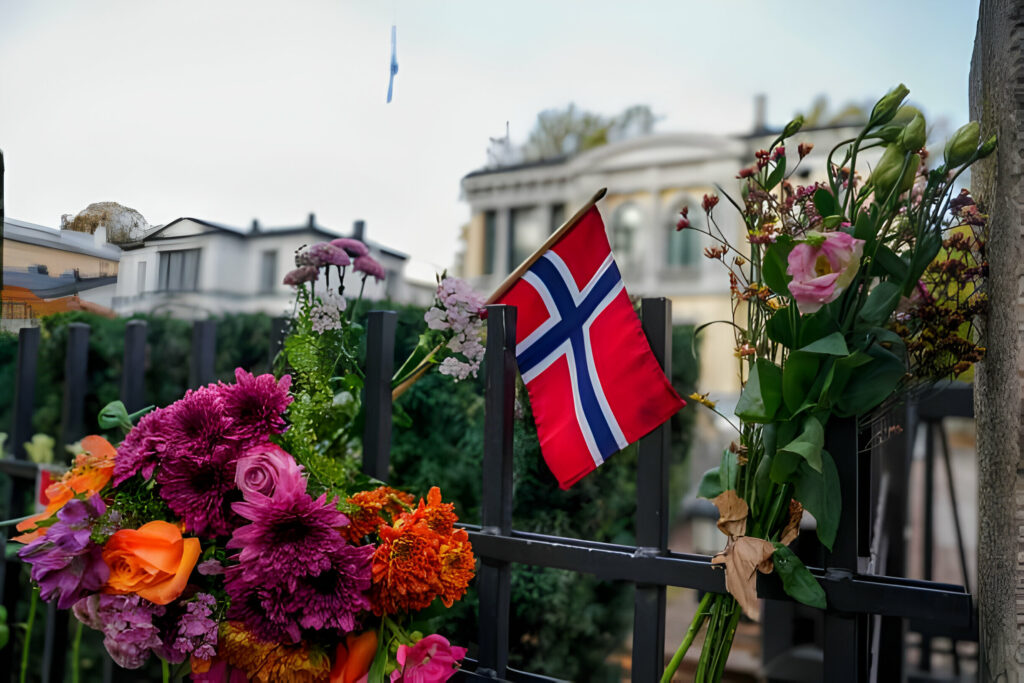Introduction
The Norway flag, with its distinctive Nordic cross design, stands as a proud emblem of the nation’s history, culture, and values. This article delves into the origins, design, and symbolism of the flag, highlighting its role in shaping and reflecting the Norwegian national identity. The flag is not just a national symbol; it’s a canvas that narrates the story of Norway, its people, and their journey through history.
Historical Background
The history of the Norway flag is intertwined with the nation’s journey to independence and self-identity. The current design was adopted on July 17, 1821, following a significant period of union with Denmark and later with Sweden. This section explores the flag’s evolution from its inception to its modern form, reflecting Norway’s political and historical milestones. The adoption of the flag symbolized a new era of Norwegian sovereignty and national pride.
Design and Symbolism
The design of the Norway flag is a testament to the country’s heritage and identity. It features a red field with a blue cross outlined in white, following the traditional Nordic cross design. This section delves into the meaning behind the colors and design. The red symbolizes strength and valor, the white represents peace and honesty, and the blue stands for loyalty, truth, and justice. The off-center cross reflects Norway’s connection to other Scandinavian countries, embodying a shared history and cultural ties. The flag’s design is a harmonious blend of tradition and symbolism, encapsulating the essence of the Norwegian spirit.
Cultural Significance
The Norway flag is deeply ingrained in the country’s cultural fabric. It is a symbol of national unity, pride, and independence, revered by Norwegians. This section explores how the flag is interwoven into various aspects of Norwegian life, from national holidays and ceremonies to everyday life. It also looks at how the flag represents the collective spirit of Norway, uniting its people across different regions and backgrounds. The flag is not just an emblem of the state but a part of the Norwegian identity itself, representing the values and aspirations of its people.
Norway Flag
Modern Times
In contemporary Norway, the flag continues to hold significant importance. It is prominently displayed on public buildings, at sporting events, and during national celebrations like Constitution Day. This section discusses the flag’s role in modern Norwegian society, how it is used to express national sentiment, and its influence in fostering a sense of community and belonging. The flag’s presence in international arenas, representing Norway in sports, diplomacy, and global events, also highlights its role as a symbol of the nation on the world stage.

Global Recognition
The Norway flag is recognized globally as a symbol of a progressive, peaceful, and prosperous nation. This section examines how the flag is perceived internationally, its role in diplomatic relations, and how it represents Norway in various global contexts. The flag not only signifies the country’s sovereignty but also its contributions to international peace, environmental conservation, and humanitarian efforts. Its distinct design makes it easily identifiable, symbolizing the unique identity and values of Norway in the global community.
FAQS
- What do the colors of the Norway flag represent?
- The Norway flag features three colors: red, white, and blue. The red represents strength and valor, the white signifies peace and honesty, and the blue symbolizes loyalty, truth, and justice.
- When was the Norway flag officially adopted?
- The current design of the Norway flag was officially adopted on July 17, 1821.
- Why does the Norway flag have a Nordic cross?
- The Nordic cross design is a common theme among Scandinavian countries, symbolizing their shared history and cultural ties. For Norway, this design reflects its connection to other Nordic nations.
- How is the Norway flag used in national celebrations?
- The Norway flag is prominently displayed during national celebrations, particularly on Constitution Day (May 17th). It is also used in other public events, ceremonies, and sports events to represent national pride and unity.
- Can the Norway flag be displayed all year round?
- Yes, private individuals and public institutions in Norway can display the flag all year round. However, there are specific flag flying days where it is especially encouraged.
- Is there an etiquette for displaying the Norway flag?
- There are guidelines for displaying the Norway flag, such as not letting it touch the ground, ensuring it’s hung correctly, and taking it down at sunset.
- What makes the Norway flag unique compared to other Scandinavian flags?
- While it shares the Nordic cross design with other Scandinavian flags, the specific color scheme and proportions of the Norway flag are unique. The combination of red, white, and blue in the particular layout of the cross differentiates it from its Nordic counterparts.
- Does the Norway flag have any variations for specific uses?
- The national flag is the standard version used in most contexts. However, there are variations like the state flag (which includes the state arms) used by the military and on certain official buildings.
- How is the Norway flag perceived internationally?
- Internationally, the Norway flag is seen as a symbol of a progressive, peaceful, and prosperous nation. It is recognized for representing Norway’s contributions to international diplomacy, peacekeeping, and environmental conservation.
- Are there any historical changes to the Norway flag design?
- The basic design of the Norway flag has remained consistent since 1821. However, minor adjustments have been made over the years, primarily in terms of dimensions and shades of the colors used.
Conclusion
The Norway flag is more than a national emblem; it’s a symbol of the country’s history, culture, and values. It represents the journey of a nation through centuries, embodying the spirit of independence, unity, and pride. As Norway continues to play a significant role on the global stage, its flag remains a powerful and enduring symbol of its heritage and aspirations. The flag’s deep-rooted significance in the hearts of Norwegians and its recognition worldwide attest to its enduring legacy as a symbol of national identity and pride.






